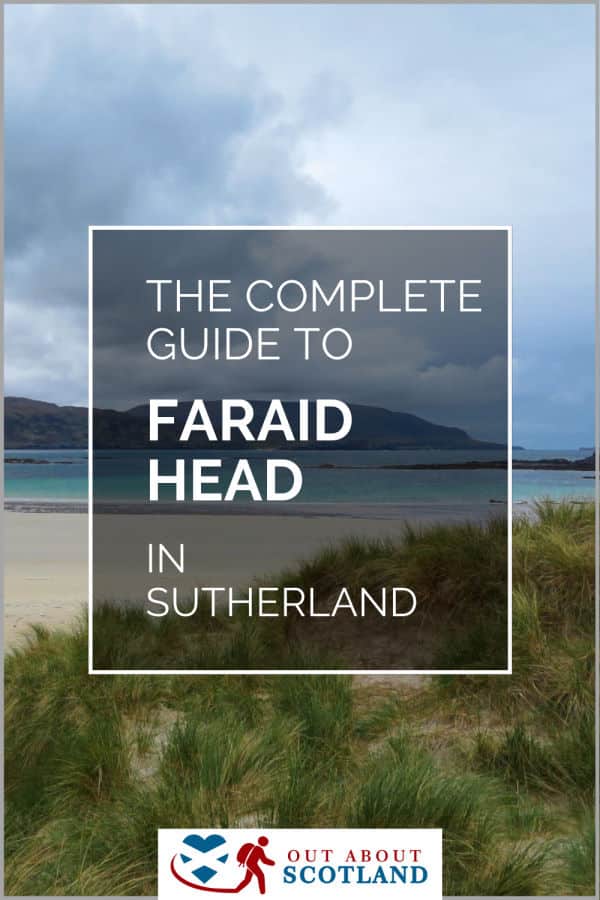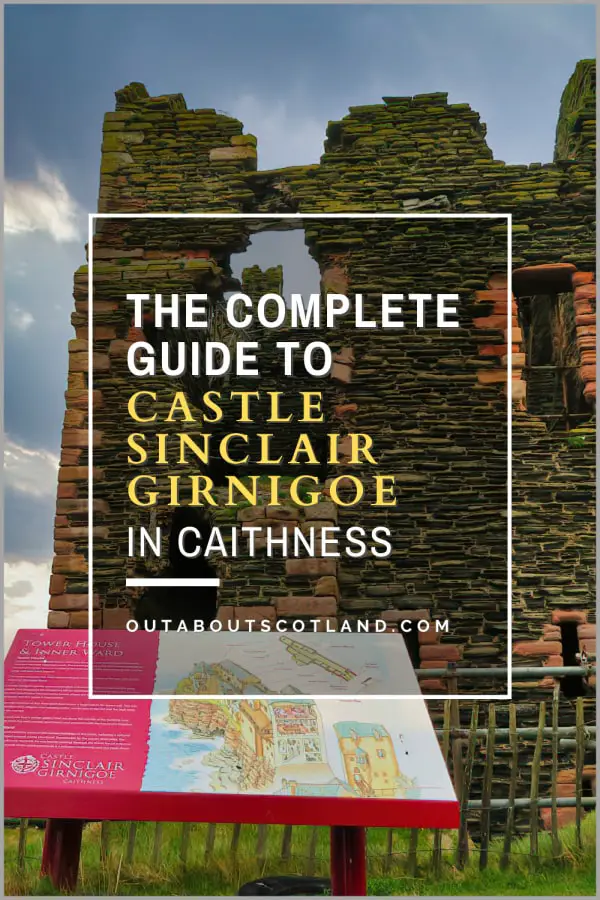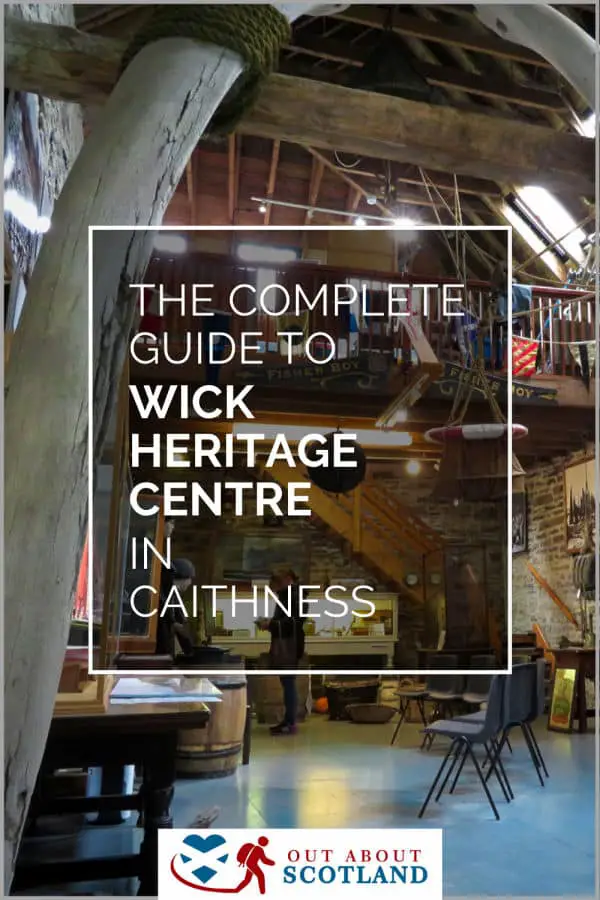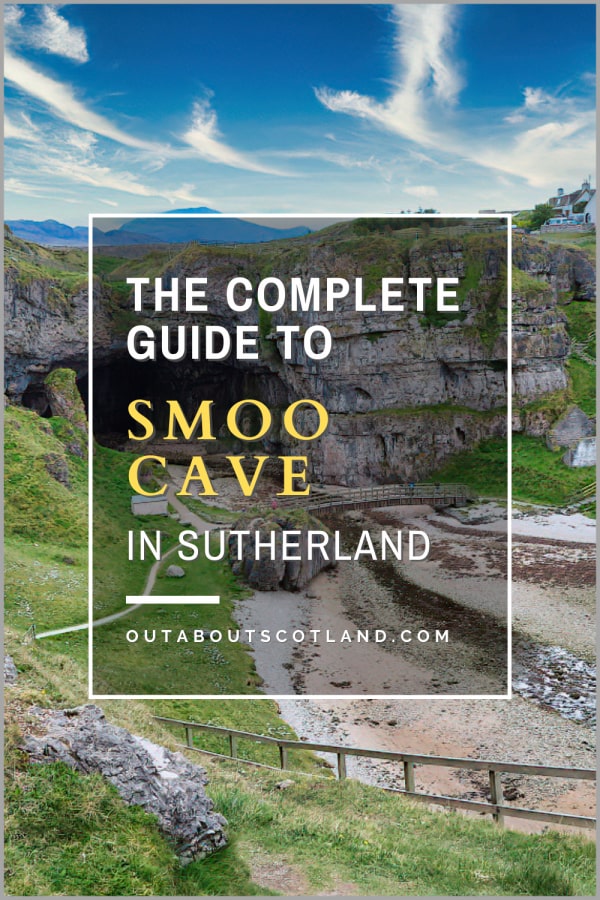Castle Sinclair Girnigoe is a ruined castle in Caithness that’s listed by the World Monuments Fund. The castle is actually two castles: Castle Girnigoe and Castle Sinclair. They were historically considered to be separate structures but are now recognised as one complex.
The oldest part, Castle Girnigoe, dates back to the late 14th or early 15th century and was the seat of the powerful Sinclair family. The Clan Sinclair Trust is in charge of managing the castle, and admission is free.
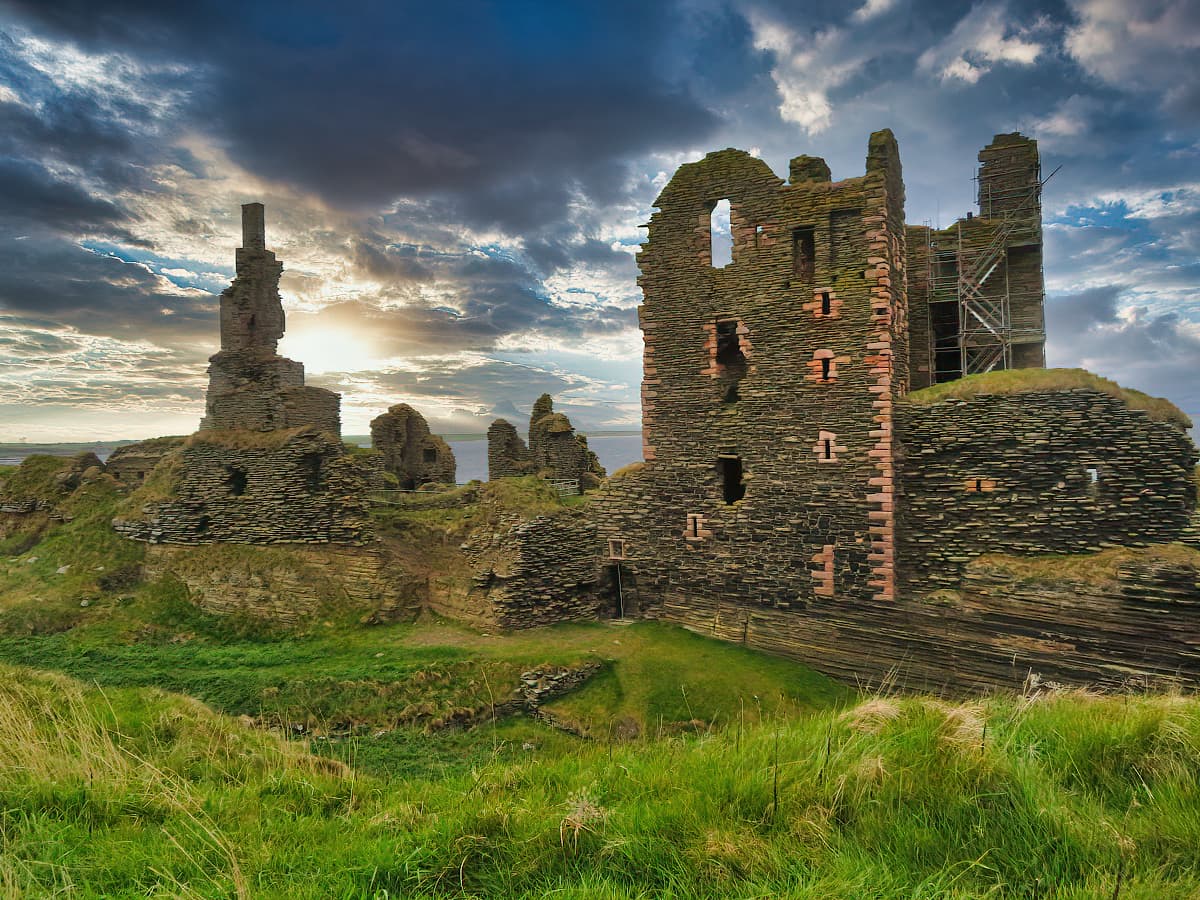
| Address: | Wick, KW1 4QT |
| Opening Hours: | 24/7 |
| Admission Price: | Free |
| Parking: | Free car park at Noss Head |
| Contact: | N/A |
| Facilities: | None |
| Photos: | Virtual Tour YouTube Video |
Overview
Castle Sinclair Girnigoe can be found roughly three miles north of Wick on the far north-east coast of Scotland. This castle (actually castles; more on that later) stands on one of the most dramatic viewpoints in the country, with a wild and windswept coastline that’s part of the popular John O’Groats Walking Trail.
The history of the castle is rather interesting, and it’s something you’ll learn about during your visit thanks to information boards installed throughout the site. Unlike most Scottish castles, the visitor facilities weren’t installed by Historic Environment Scotland and are instead part of a restoration programme run by the privately managed Clan Sinclair Trust.
The trust has done a great job of reversing the effects of erosion caused by the high winds coming off the bay, and they’ve also installed a sturdy bridge so that visitors can cross the dry moat surrounding Castle Sinclair Girnigoe. Considering the trust entirely relies on donations, it’s amazing to see what they’ve accomplished.
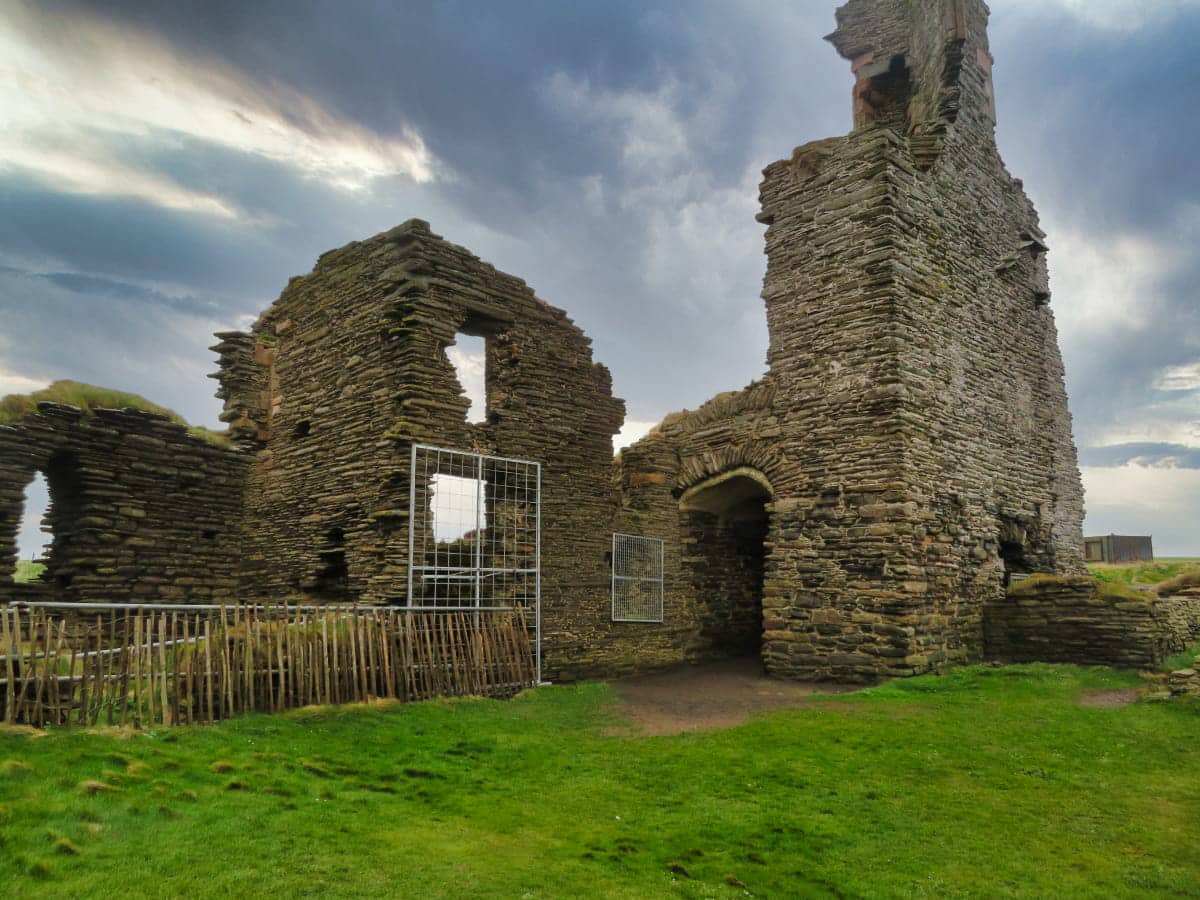
The ruins that we see today are actually comprised of two structures. The first is that of Castle Girnigoe, which was built in the 15th century, while the second is the later 17th-century Castle Sinclair, but both are part of the legacy of the Earls of Caithness.
Castle Girnigoe was built on the foundations of an even earlier fortification that’s believed to date from Neolithic times, but it was renovated in the Renaissance period of the 1600s into a grand mansion, with the second fortress, Castle Sinclair, adding a gatehouse and a curtain wall in later years.
The decline of the castle began when the 6th Earl sold it to Sir John Campbell of Glenorchy in an attempt to repay a series of crippling debts, with the Campbells then taking the title of Earl of Caithness. In an attempt to stop the Campbells from using the castle, it was sieged and partially destroyed by the Sinclairs in 1677, after which it passed to the Dunbar family, who took ownership but never repaired it.
The continual erosion from the sea was the final nail in the coffin for the fortress, and by the early 1700s, it had fallen into ruin until the Clan Sinclair Trust started to slowly but steadfastly repair it.

The Highlights
1: The castle complex includes a variety of architectural features, such as a gatehouse, a tower house, and courtyards. The buildings were constructed over several phases, with additions made up until the 17th century.
2: Castle Sinclair Girnigoe is not only a fascinating historical site but also a place of incredible natural beauty. Its ruins offer a glimpse into Scotland’s mediaeval past and the power struggles that shaped the nation’s history, all set against the backdrop of the rugged Caithness coastline.
3: The Castle Sinclair Girnigoe Trust aims to stabilise and preserve the ruins for future generations. The castle is listed as a Scheduled Ancient Monument, recognising its historical and architectural importance.
Visiting Tips
1: Take a look at the inlets that cut into the cliffs as you approach the castle, as they’re a haven for seabirds, and if you look out to sea, there’s a good chance you’ll spot dolphins.
2: The rough terrain and open cliff edges of the castle require caution, but the views and the sense of history make it a worthwhile visit for those interested in Scotland’s past.
3: The castle is open to the public year-round and can be reached via a short walk from a nearby car park. There’s no entrance fee, but visitors should note that there are no facilities at the castle itself, so planning ahead in terms of food and water is advisable.
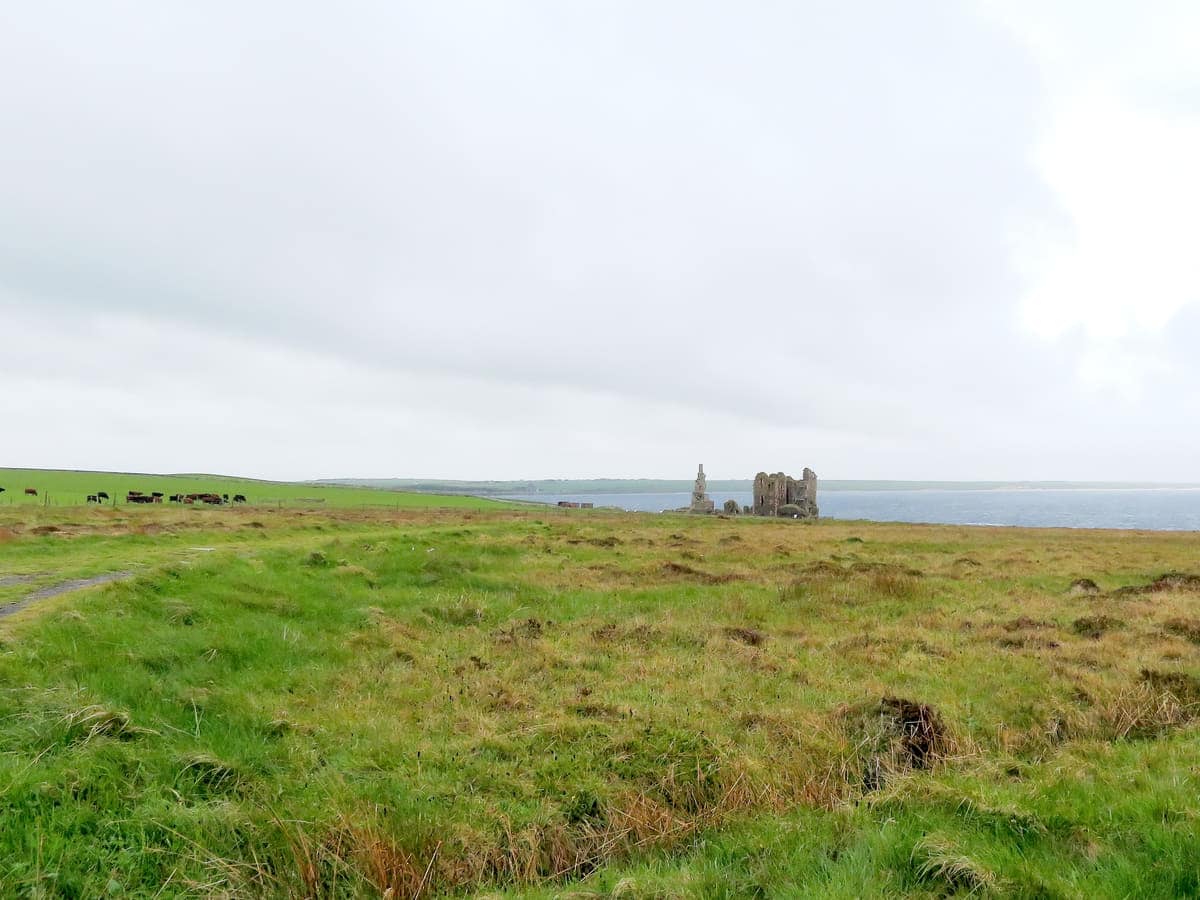
Tourist Information
So what can you expect to see at this ruined Scottish castle when you visit it today? Quite a lot, actually, as aside from the castle ruins, there’s a beautiful coastline that looks out over the Noss Head marine conservation area, along with several coastal trails around the peninsula.
I have to admit I enjoyed the walk to the castle from the Noss Head lighthouse, as skylarks, lapwings, fulmars, curlews, oystercatchers, and many more bird species can be spotted if you stop to look for them, while the sea is a haven for otters and grey seals.
If you have kids with you they’re going to love exploring the wee coves that have been carved into the cliffs along the promontory while dogs will have a field day nosing around in the tumbling grassland. As a place to take the family, this is a first-class location.
The walk to the castle is a short one – maybe half a mile – but it’s very scenic, with the silhouette of the castle in the distance adding just a touch of drama to the whole experience. Once you reach the ruins, you can either follow a narrow track down to the sea or cross the bridge that takes you into the castle’s interior.
It doesn’t take long to walk around the ruins, but there are lots of nooks and crannies for children to explore. However, be aware that the cliffs below are sheer-sided. As I mentioned earlier, the Sinclair Trust has installed barriers along the cliff edges, but there’s a section on the north side of the castle where you can get down onto the rocks below that have quite a steep drop into the sea.
After you’ve seen the castle, you can continue further west along the coastline by following a winding path that hugs the water’s edge, or you can head in the opposite direction to explore the eastern side of the Noss Head peninsula.
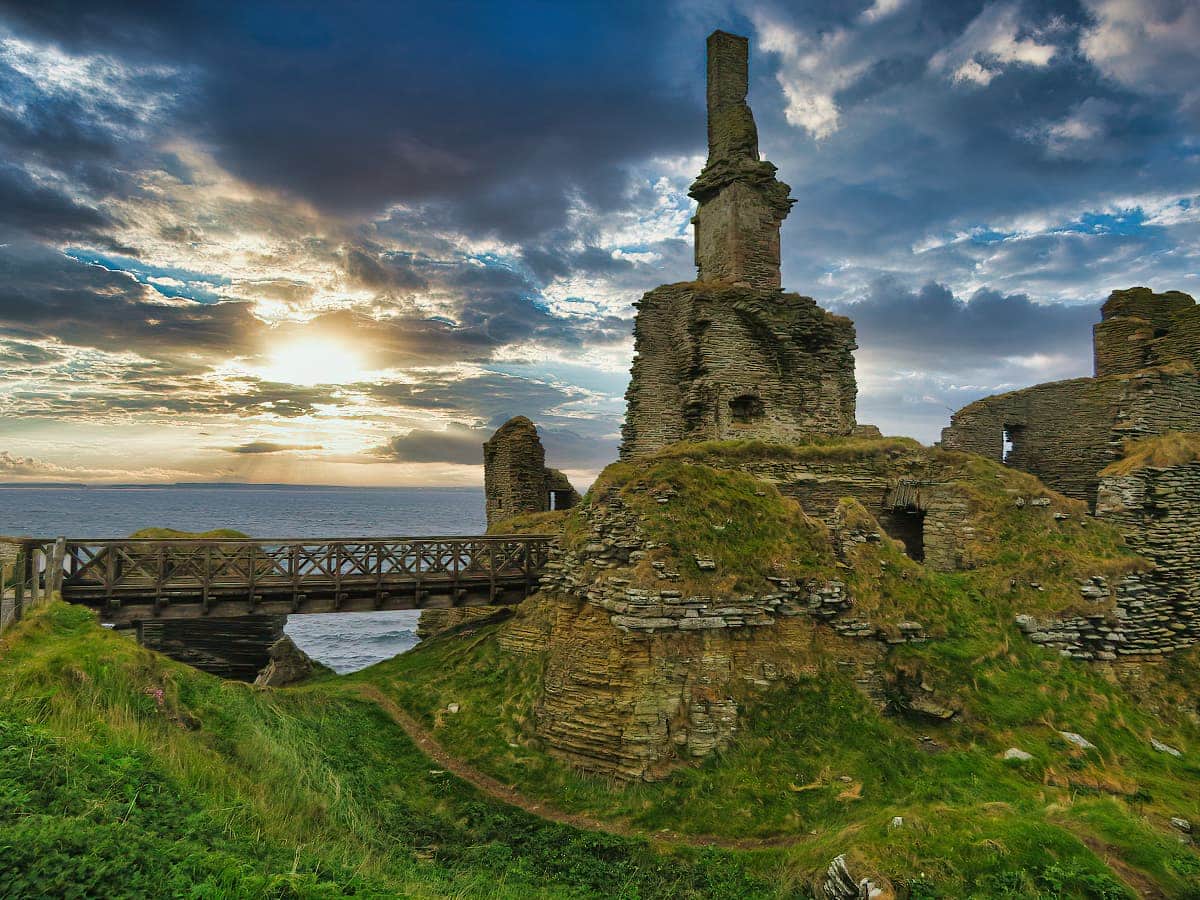
Things to Do
Castle Exploration: Unleash the history buff in you by exploring Castle Sinclair Girnigoe, a 15th- and 17th-century castle with significant historical relevance. Marvel at the stunning clifftop location, learn about Clan Sinclair, and soak in the breathtaking views of the North Sea.
Photography: Capture the stunning landscapes and the dramatic ruins of the castles. The rugged cliffs and sea views provide a picturesque backdrop for anyone wanting to practice their photography skills, whether amateurs with a phone or semi-pros with the latest camera gear.
Picnic by the Sea: Work up an appetite walking around the coastline and then unpack a picnic and enjoy it on the grass areas overlooking the sea near Castle Sinclair Girnigoe. The beautiful scenery and tranquil setting provide the perfect atmosphere for an outdoor lunch.
Wildlife Spotting: The area around the castles is teeming with wildlife. Keep an eye out for gulls and terns on the clifftop and seals basking on the rocks below. If you’re lucky, you might even spot a dolphin or a whale swimming by.
Coastal Walks: Take a stroll along the coastal paths that start at Reiss Sands. The walk offers stunning views of the castles from various angles, a rugged coastline, and an opportunity to appreciate the wild beauty of Noss Head.
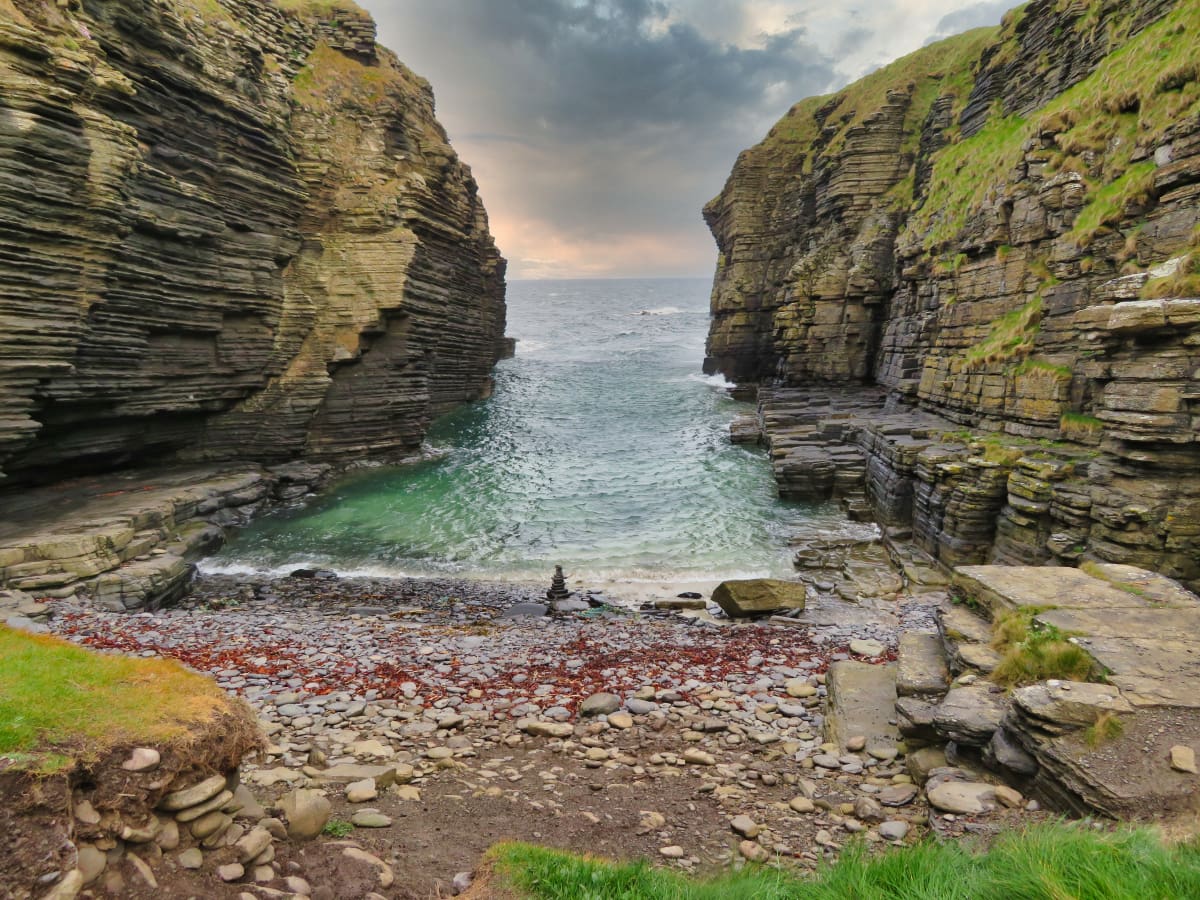
Things to Do Nearby
John O’Groats. John O’Groats, Wick KW1 4YR. 33-minute drive.
Proclaimed (incorrectly) as the most northerly point of the British mainland, John O’Groats has developed a tourist resort around the famous signpost that marks the distance to various locations around the world. There are cafés, shops and restaurants on the site.
The Wick Heritage Museum. 20 Bank Row, Wick KW1 5EY. 13-minute drive.
Independent volunteer-run museum that is far larger than it looks from the outside. Located close to Wick Harbour, the heritage museum offers a glimpse into Wick’s past with a collection of artefacts, displays and exhibitions.
Duncansby Head. Wick KW1 4YS. 39-minute drive.
A promontory that is within walking distance of John O’Groats and is officially the most northern part of Britain. There is a historic lighthouse with a visitor car park and the trail to the impressive Duncansby Sea Stacks offers stunning clifftop walks.
Wick. Wick KW1 5EN. 12-minute drive.
One of the largest towns in Caithness, a hundred years ago it had one of the busiest herring fishing industries in the world. Today, many visitors use Wick as a base to explore the remote surrounding area. The town centre has modern conveniences such as food stores, restaurants and petrol stations.
Nybster. Nybster, Wick KW1 4XR, 25-minute drive.
A much-visited coastal region that has a variety of wildlife walks along the seafront where visitors can watch puffins, seals, and a variety of seabirds. There are also several brochs (ancient fortifications) in the area.
Frequently Asked Questions
Can you visit Castle Sinclair?
Visitors are allowed to visit Castle Sinclair Girnigoe free of charge. There is no admission charge for the castle or the car park at Noss Head.
Address: Wick, KW1 4QT.
Where does the Sinclair clan come from?
Clan Sinclair were the Earls of Orkney and Caithness. The clan chiefs originally landed in England from Normandy during the Norman conquest before settling in Scotland in the 11th century.
What are Castle Sinclair Girnigoe’s opening times?
Castle Sinclair Girnigoe is open all day, 365 days a year, although as it is unmanned, the main entrance gate is sometimes locked.
What happened to Castle Sinclair, Girnigoe?
Castle Sinclair Girnigoe is a historic ruin located in Caithness, in the northeastern part of Scotland. The castle, which dates back to the 15th century, was originally two separate structures that were later combined into one.
Over the centuries, it has experienced several conflicts and changes in ownership, leading to its gradual deterioration. It was abandoned in the late 17th century and fell into ruin, but despite its decayed state, it’s considered one of the most significant castles in Scotland.
In 2002, the Clan Sinclair Trust launched a restoration project to prevent further decay and make the castle safe for visitors. Today, while restoration work is still ongoing, the castle is open to the public and is a popular tourist attraction.
It was listed as one of the world’s 100 most endangered sites by the World Monuments Fund in 2000.



